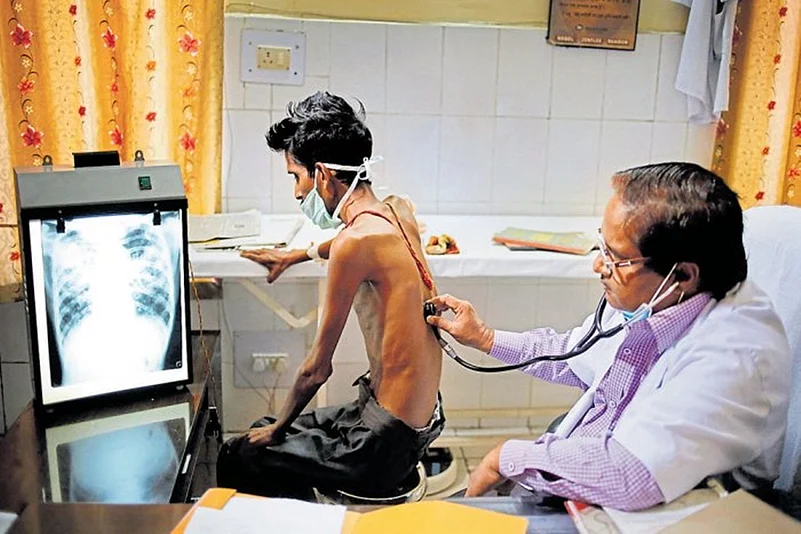On the cusp of the 21st century, the United Nations (UN) established 8 Millennium Development Goals to end poverty, protect the planet, and ensure prosperity for all. These goals were further extended to 17 Sustainable Development Goals (SDGs) with a renewed target of attainment by 2030. Sustainable Development Goal 3 seeks to ensure good health and well-being for all with one of the primary targets being the eradication of Tuberculosis (TB) by 2030.
Tuberculosis has been in existence since time immemorial. Despite the progress made over the last decade, it continues to remain a major global public health problem claiming over 4,000 lives a day. According to the report by World Health Organization (WHO), nearly 100 crore people are suffering from TB globally and India alone accounts for around 27 per cent of these cases. While the elimination of TB seems a herculean task, India under the aegis of Prime Minister, Narendra Modi India has accorded high priority for eliminating the disease by 2025, five years ahead of the SDG target. With bold and innovative programmes, the Government has taken several critical steps towards fulfilling this objective, the bedrock being the development of The National Strategic Plan (NSP) in 2017. With historic funding of over 12,000 crore rupees, the NSP is built on a multi-pronged approach that seeks to ‘Detect’ all TB patients seeking care from private providers and undiagnosed TB in high-risk populations, ‘Treat’ all patients irrespective of where they seek care adopting a patient centric approach, ‘Prevent’ emergence of TB in susceptible population groups and ‘Build’ empowered institutions and human resources to streamline implementation. To galvanize efforts and go beyond the activities assigned under NSP, the Prime Minister also launched the TB-free India Campaign in 2018.
Advertisement
TB is not just a disease but also a socio-economic problem. Since poverty, financial crunch and nutritional burden are important risk factors leading to active TB cases, cash benefit of Rupees 750 rupees is being given to TB patients towards nutritional support for the duration of their treatment through Direct Benefit Transfer (DBT), under the Nikshay Poshan Yojana, implemented from 1st April 2018. To ensure smooth linkages and convergence between the TB programme and various ministries such as Ministry of Tribal Affairs, Ministry of Women and Child Development, Ministry of Social Justice & Empowerment and Ministry of Labor & Employment, an Inter-Ministerial Coordination committee under the chairpersonship of Secretary, Ministry of Health and Family Welfare has also been established by the Central government.
Advertisement
With massive efforts and continued resilience towards achieving the goal, the result is for everyone to see. According to the Global TB report- 2019, India has shown significant progress in its battle against TB. The total incidence rate has decreased by almost 50,000 patients. In 2017, India had 27.4 lakh TB patients, which came down to 26.9 lakh in 2018. Incidence per 1 lakh population decreased from 204 in 2017 to 199 in 2018. The number of patients being diagnosed for resistance to rifampicin (one of the frontline TB drugs) increased from 32 per cent in 2017 to 46 per cent in 2018 due to mandatory testing for resistance. The treatment success rate increased to 81 per cent for new and relapse cases (drug-sensitive) in 2017, which was 69 per cent in 2016. The number of missing TB patients has been significantly reduced from one million in 2016 to less than 0.5 million in 2019. And with the scale-up of rapid molecular diagnostics in every district of the country, the identification of drug-resistant TB patients has gone from 38,000 in 2017 to 58,000 in 2018 to 66000 in 2019 and 66000 in 2019.
Though across the globe, Covid-19 has wreaked havoc on our public health care systems and derailed the efforts in tackling tuberculosis, the dip in TB notifications in India is not very sharp and the recovery has been quicker, as reported by the WHO. This can primarily be attributed to the swift action taken by the government in issuing constant advisories to the States to ensure convergence of TB case finding with COVID-19 efforts. The timely initiation of bi-directional screening among TB and COVID patients, screening for TB among influenza like illness (ILI) and severe acute respiratory infections (SARI) along with increased masking, social distancing and adherence to safety protocols, has immensely helped in mitigating the impact of Covid on TB. While the pandemic has posed a double whammy for the India’s healthcare system, it has also made us realize that in order to battle this killer disease, India need all hands on the deck. Along with a greater integration of our public and private health sectors besides a major thrust on Technology and Innovation, increased public participation and cooperation will go a long way in ensuring India’s success and catering to the health needs of over 1.3 billion people.
Advertisement
(The author is a Senior Consultant (Health) at NITI Aayog. Views expressed are personal.)




















